Nuestro dientes para ser restaurados debemos conservarlos con un biomaterial adecuado el cual sea compatible con el diente además pueda tener una buena adhesión, también que ayude a regenerar la pulpa, reparar la dentina y por último restaurar el esmalte dental, que este sólo podemos restaurarlo ya que no tiene la capacidad de regenerarse ni repararse. Se debe proteger lo más posible la vitalidad del diente, por medio de adecuadas maniobras de restauración que permitan en el paciente tener una excelente restauración.
In order to restore our teeth, we must conserve them with a suitable biomaterial that is compatible with the tooth and can also have good adhesion, help to regenerate the pulp, repair the dentine and finally restore the dental enamel, which can only be restored as it is not capable of regenerating or repairing itself. The vitality of the tooth must be protected as much as possible, by means of suitable restoration manoeuvres that allow the patient to have an excellent restoration.
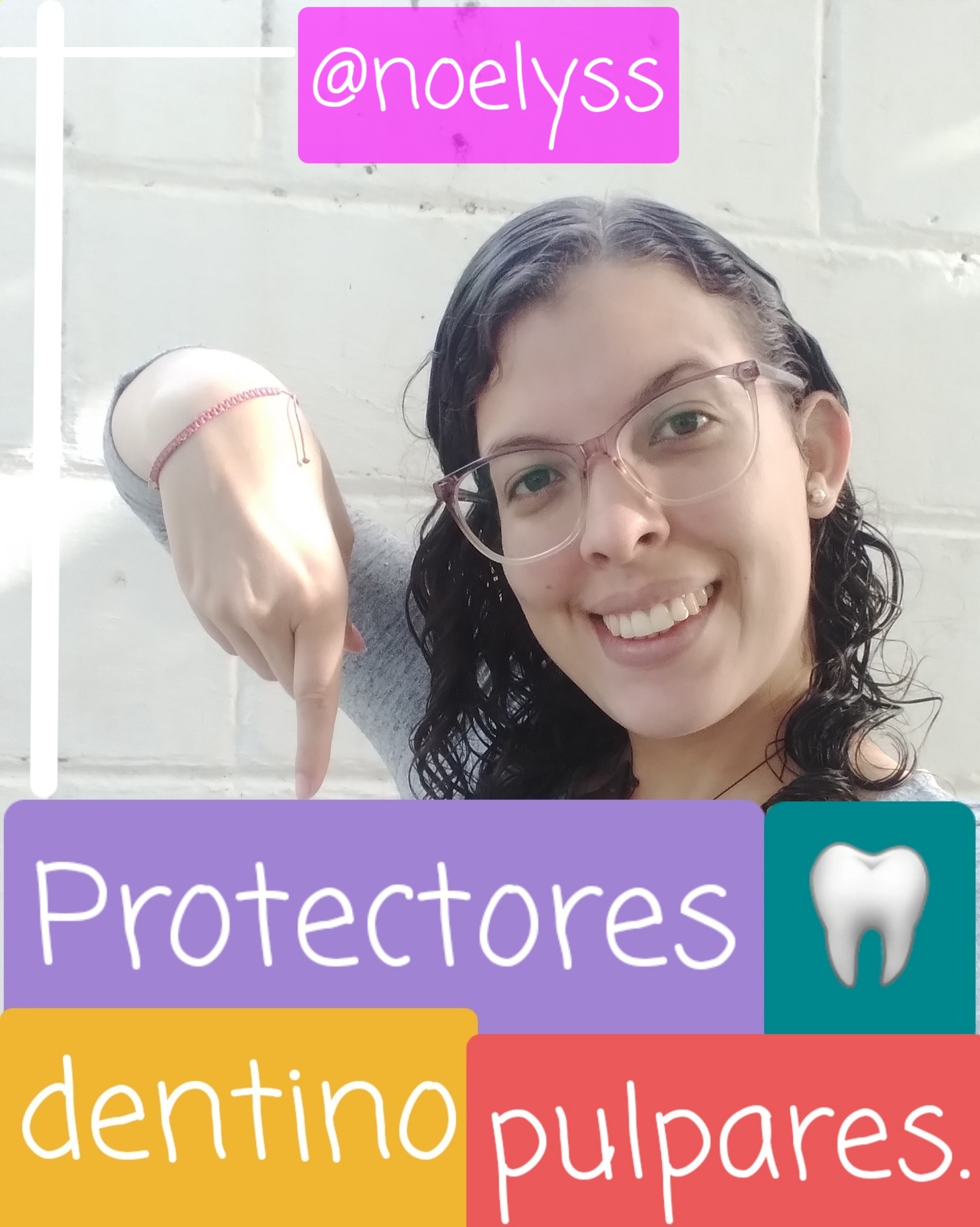 Bienvenidos a mi tema protectores dentino pulpares.
Bienvenidos a mi tema protectores dentino pulpares.Cuando hablamos de protectores dentino pulpares nos referimos a todas esas sustancias, materiales y también maniobras que utilizaremos, haremos durante la preparación de una cavidad, así como la preparación de la mismas, ya que de manera constante se debe preservar la función de la vitalidad del órgano dentino pulpar.
When we talk about dentin-pulp protectors we refer to all those substances, materials and also manoeuvres that we will use, we will do during the preparation of a cavity, as well as the preparation of the cavity, since the function of the vitality of the dentin-pulp organ must be constantly preserved.
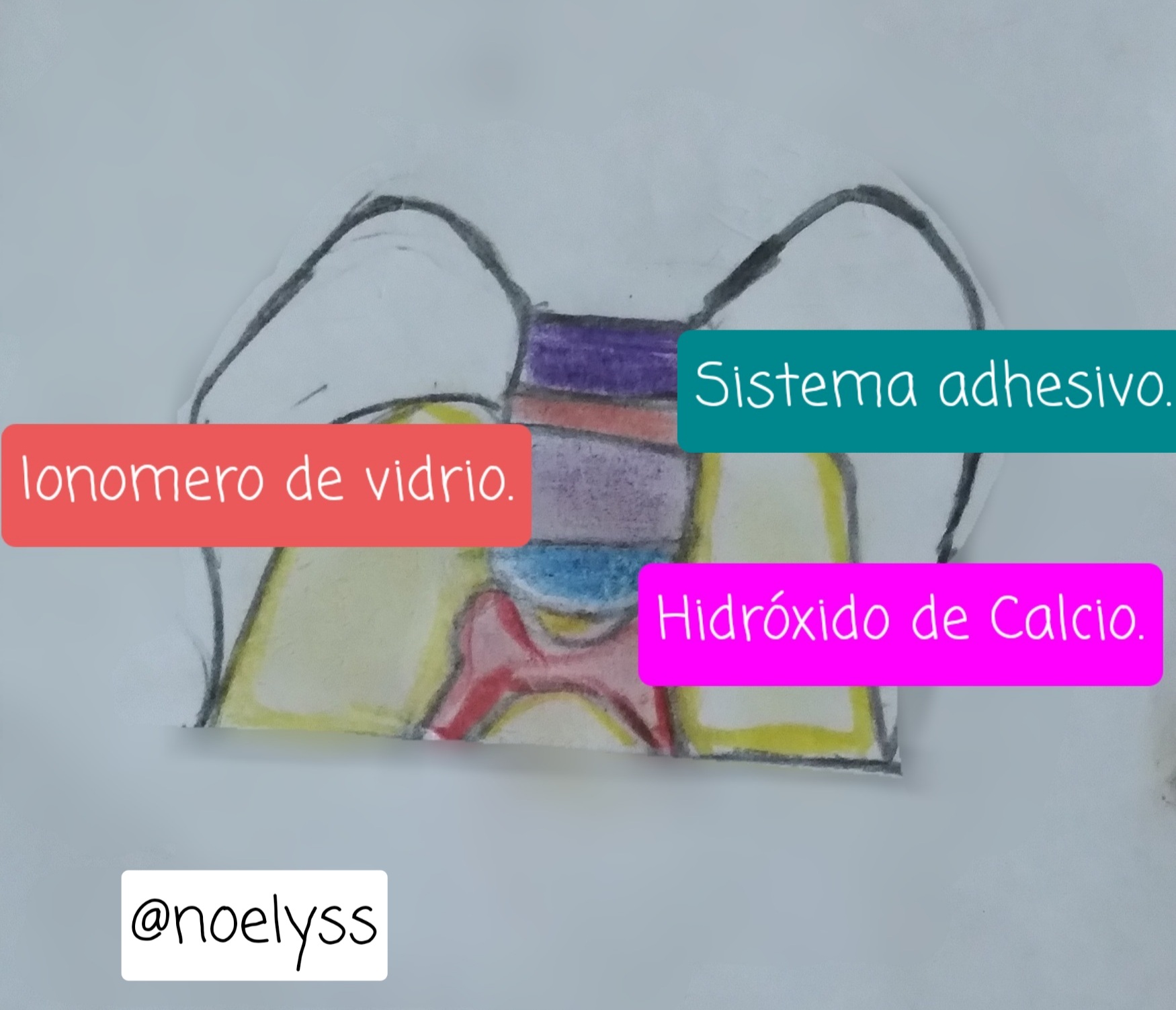 Sistemas adhesivos en el diente(ilustración).
Sistemas adhesivos en el diente(ilustración).Existen dos tipos de protectores dentino pulpares los cuales son indirectos, estos no son mas que los procedimientos y maniobras que va realizar el odontólogo durante la preparación de la cavidad dental para que así se pueda proteger la vitalidad pulpar. Estos buscan actuar como un sistema de refrigeración, se debe utilizar cuidadosamente los instrumentos así como también deben tener un buen estado, el frezado y desgaste debe ser de manera intermitente para no exagerar con el corte de téjido dentario.
There are two types of dentin-pulp protectors which are indirect, these are nothing more than the procedures and manoeuvres that the dentist will carry out during the preparation of the dental cavity so that the pulp vitality can be protected. These are intended to act as a cooling system, the instruments must be used carefully and must be in good condition, and the grinding and wear must be intermittent so as not to exaggerate the cutting of the tooth tissue.
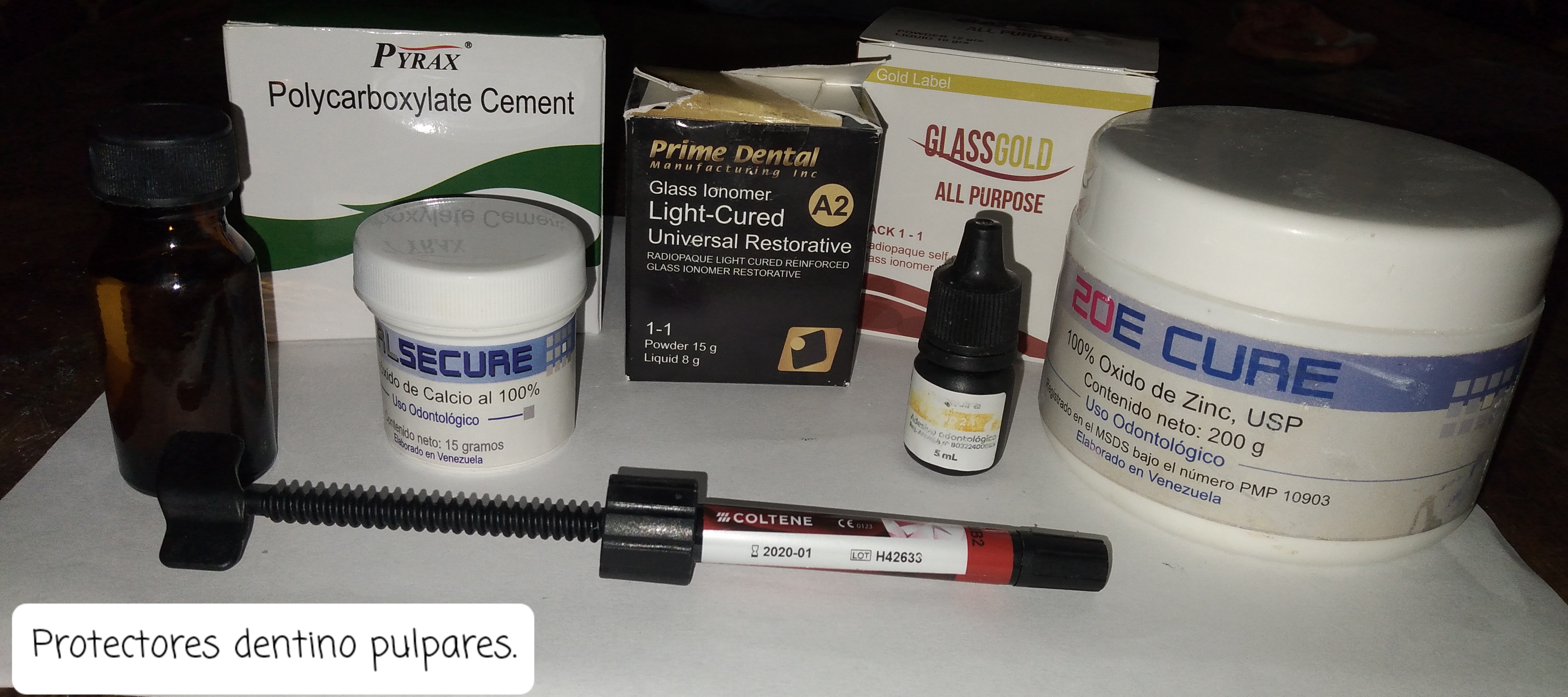
Esta los indirectos, estos son materiales y sustancias que se van aplicar directamente en el órgano dentino pulpar, estos serán colocados en el diente y la restauración, de estos están los sistemas adhesivos conocidos como bondi, barnices, vidrios ionomericos hidróxido de calcio, las bases cavitarias como policarboxilato, oxido de zinc y eugenol (zoe) y los cementos de vidrio ionomerico. Explicaré detalladamente cada uno:
There are the indirect ones, these are materials and substances that will be applied directly to the dentine-pulp organ, these will be placed on the tooth and the restoration, of these are the adhesive systems known as bondi, varnishes, calcium hydroxide ionomer glasses, the cavity bases such as polycarboxylate, zinc oxide and eugenol (zoe) and the ionomer glass cements. I will explain each of them in detail:
Los selladores dentinarios: Son recubrimientos de material que poseen pocos micrones de espesor evitando la penetración de bacterias, sustancias químicas y bacterias, cuya función será el aislamiento de eléctrico también químico, barrera antimicrobiana, reduce el galabanismo y la sensibilidad dentaria. Dentro de los mismos esta los barnices y sistemas adhesivos.
Dentine sealants: These are coatings of material that are only a few microns thick, preventing the penetration of bacteria, chemical substances and bacteria, whose function will be the isolation of electrical and chemical, antimicrobial barrier, reduces galabanism and dental sensitivity. These include varnishes and adhesive systems.

Forros cavitarios: Estos poseen una barrera mucho mas delgada, garantiza una barrera de protección ante alguna filtración va reducir la sensibilidad, son liberadores de fluor actuando como bacteriestatico para así estimular la formación de la dentina terciaria. De estos están el hidróxido de calcio, cementos de ionomero de vidrio y las resinas.
Cavity liners: These have a much thinner barrier, guaranteeing a protective barrier against leakage and reducing sensitivity. They are fluoride releasing and act as a bacteriostatic to stimulate the formation of tertiary dentine. These include calcium hydroxide, glass ionomer cements and resins.
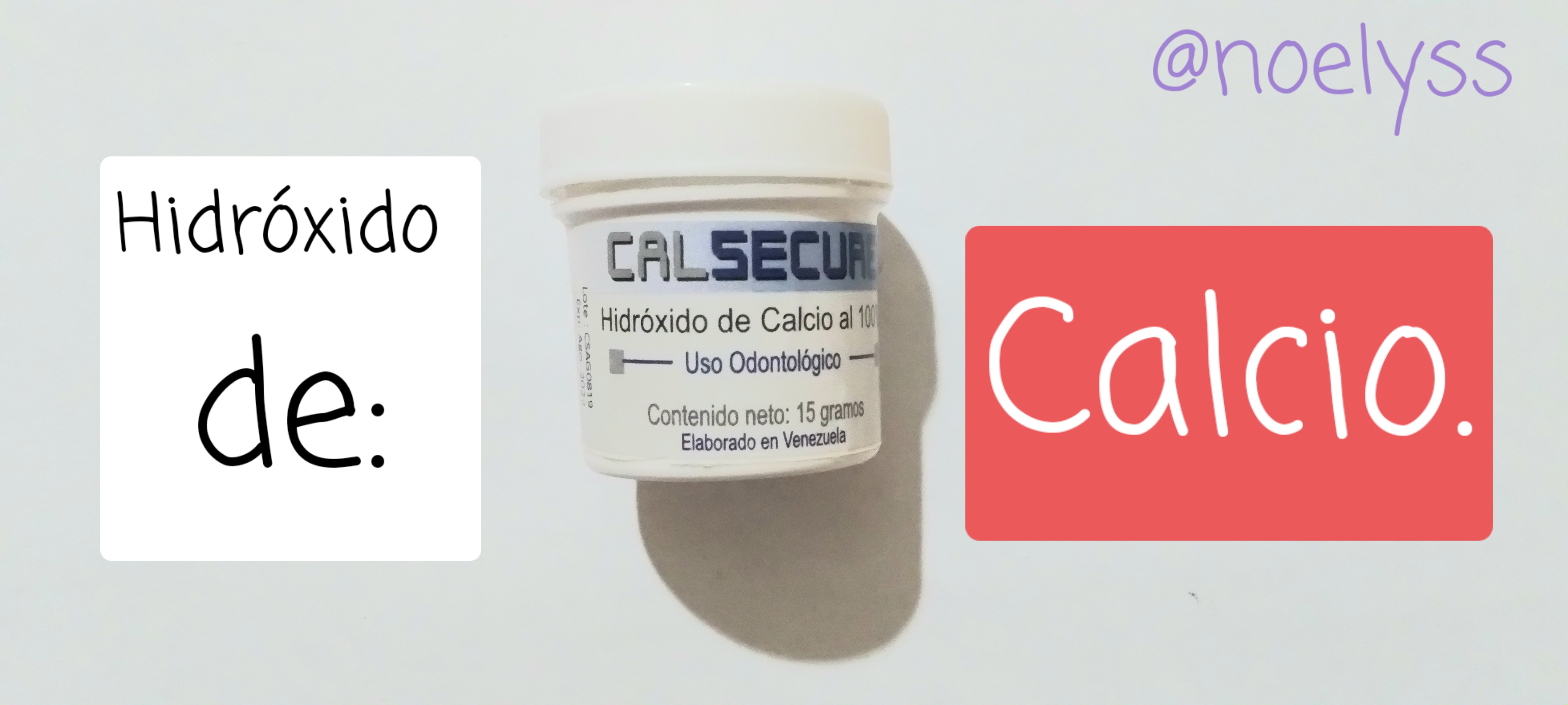
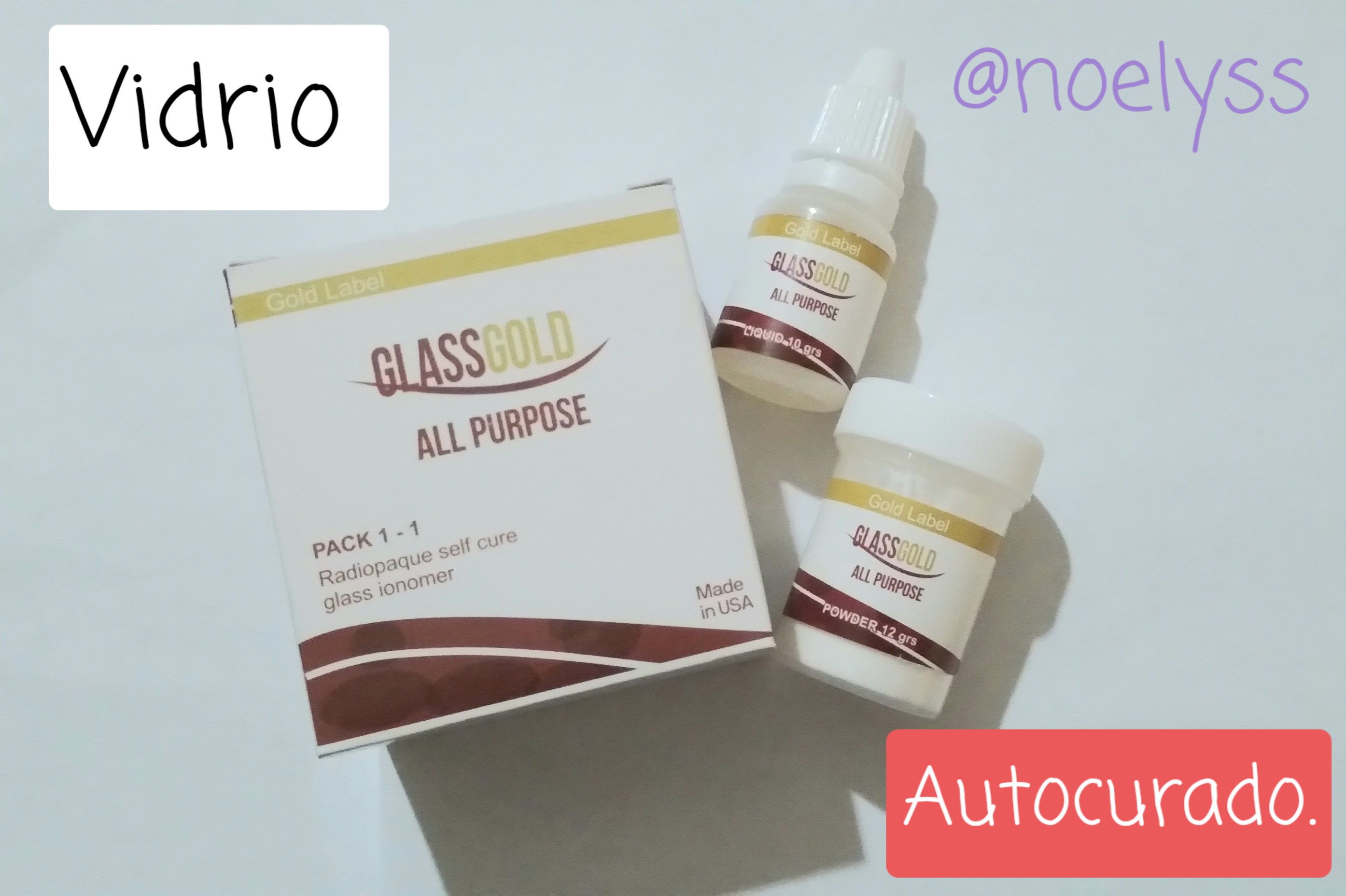
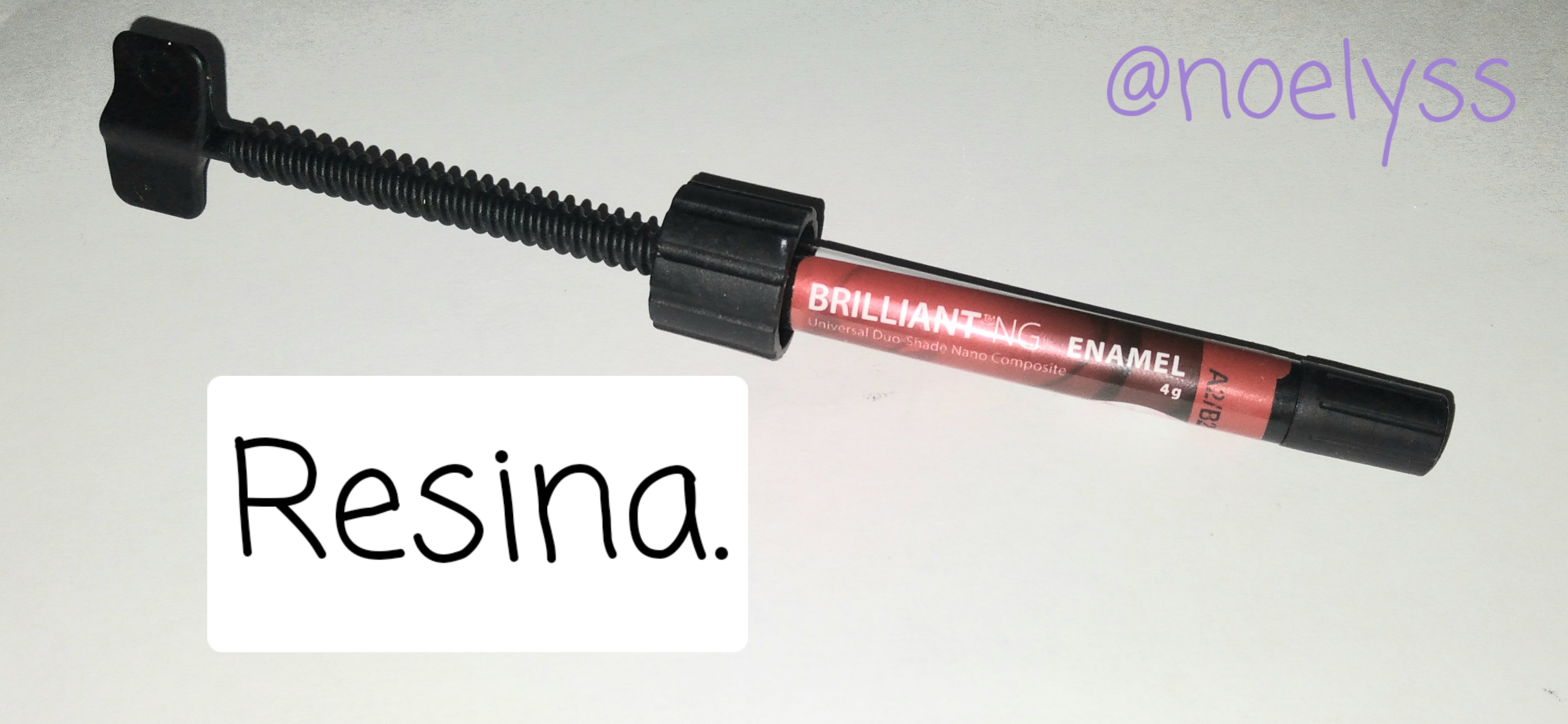
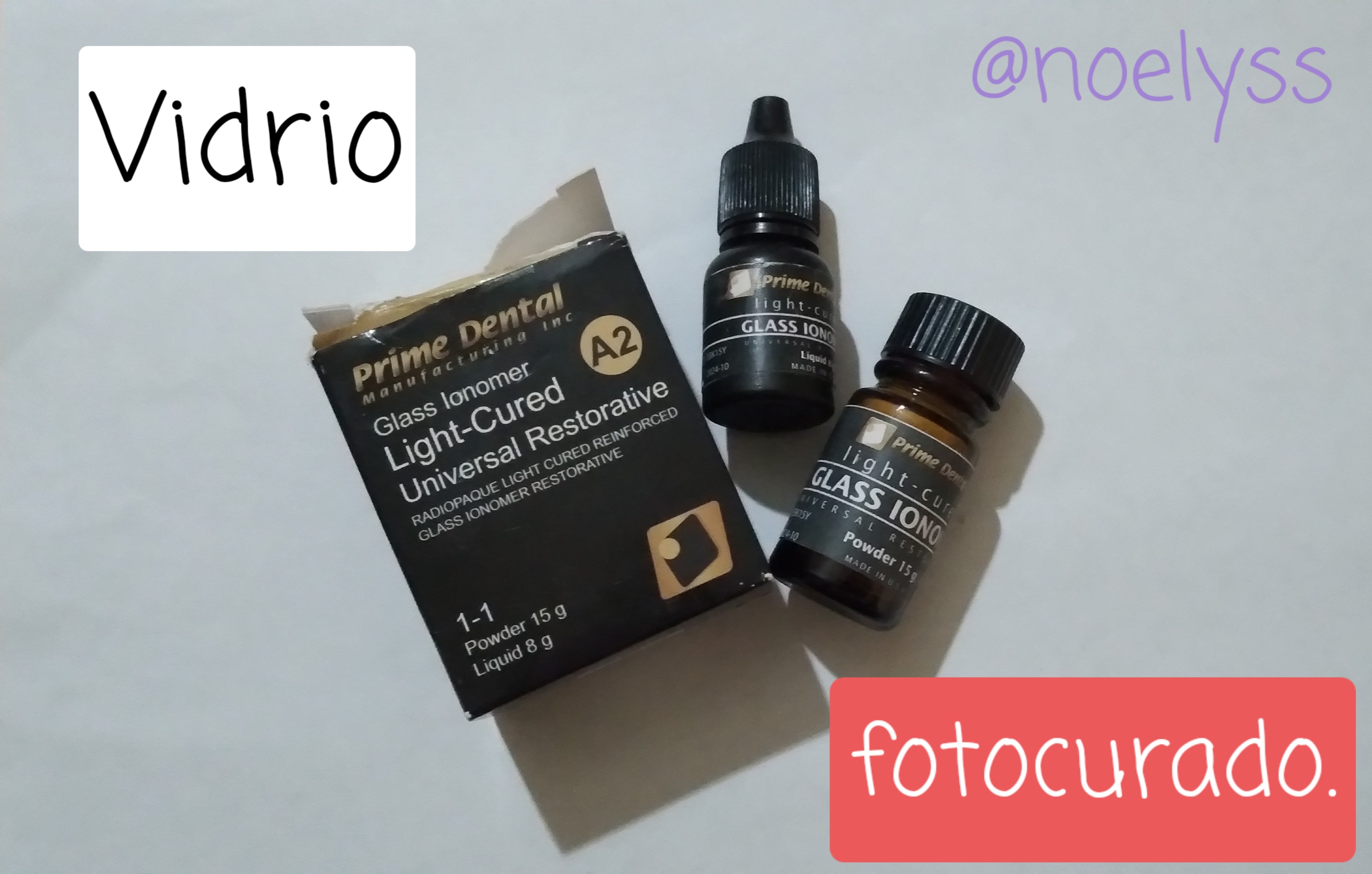
Bases cavitarias:
Son cementos de endurecimiento químico y físico, que a diferencia de los mencionados tendrán espesor de 1mm, por lo tanto van a garantizar mayor aislamiento térmico, actuando como sustituto de la dentina. Dentro de estos esta el policarboxilato, oxido de zinc y eugenol.
Cavitary bases:
These are chemically and physically hardening cements, which, unlike those mentioned above, will have a thickness of 1mm, thus guaranteeing greater thermal insulation, acting as a substitute for dentine. These include polycarboxylate, zinc oxide and eugenol.
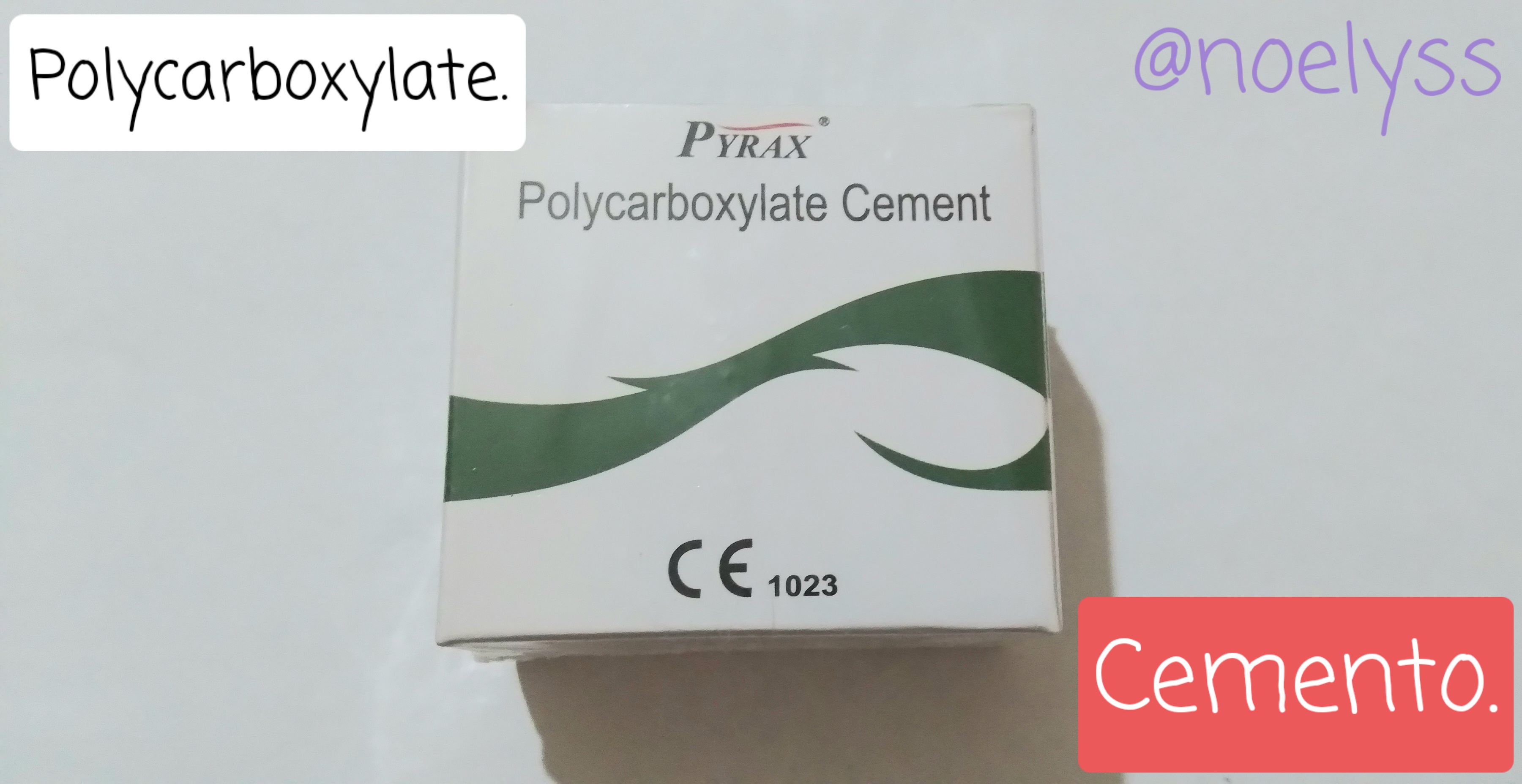
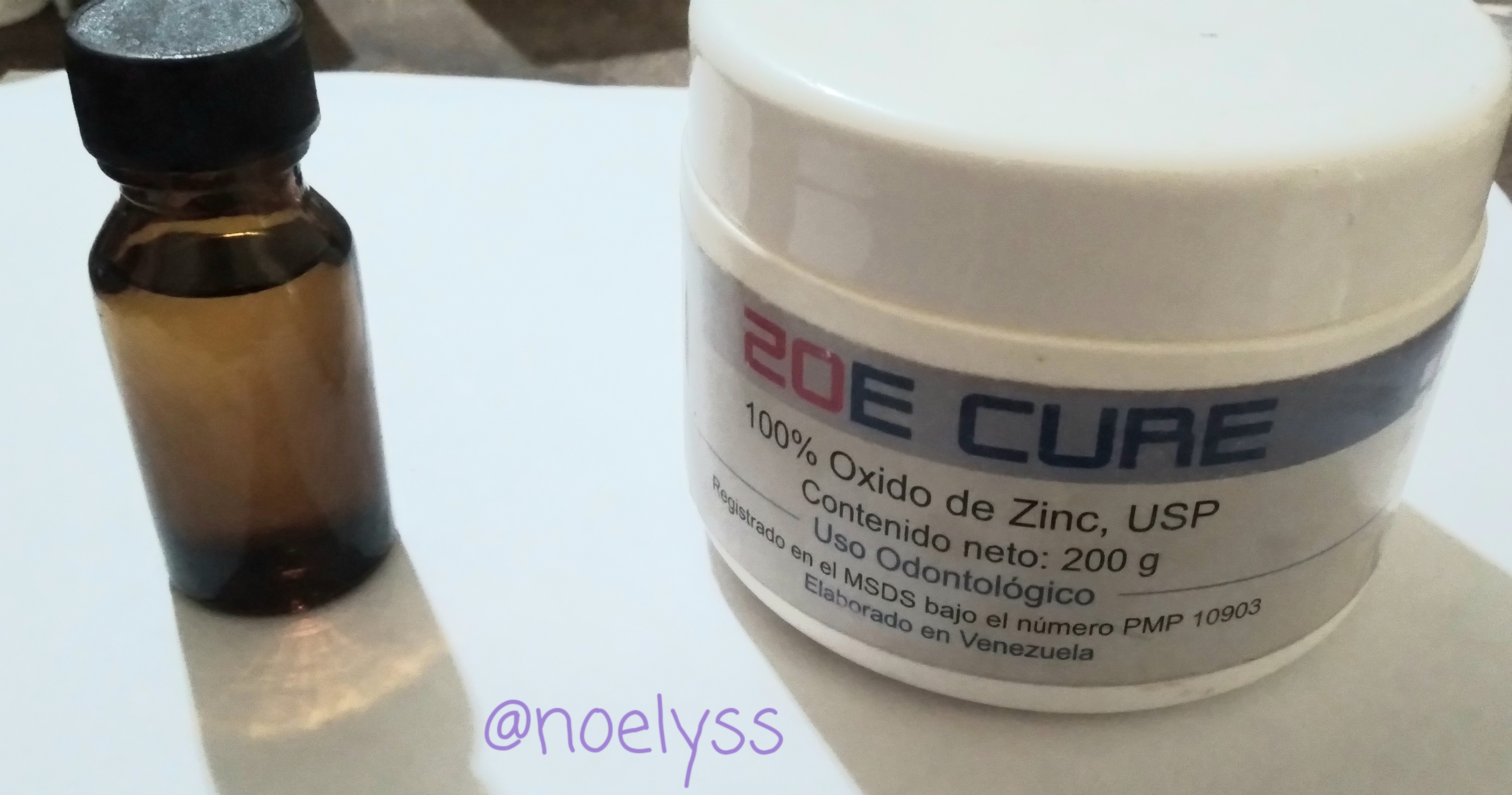 Eugenol y Óxido de Zinc
Eugenol y Óxido de Zinc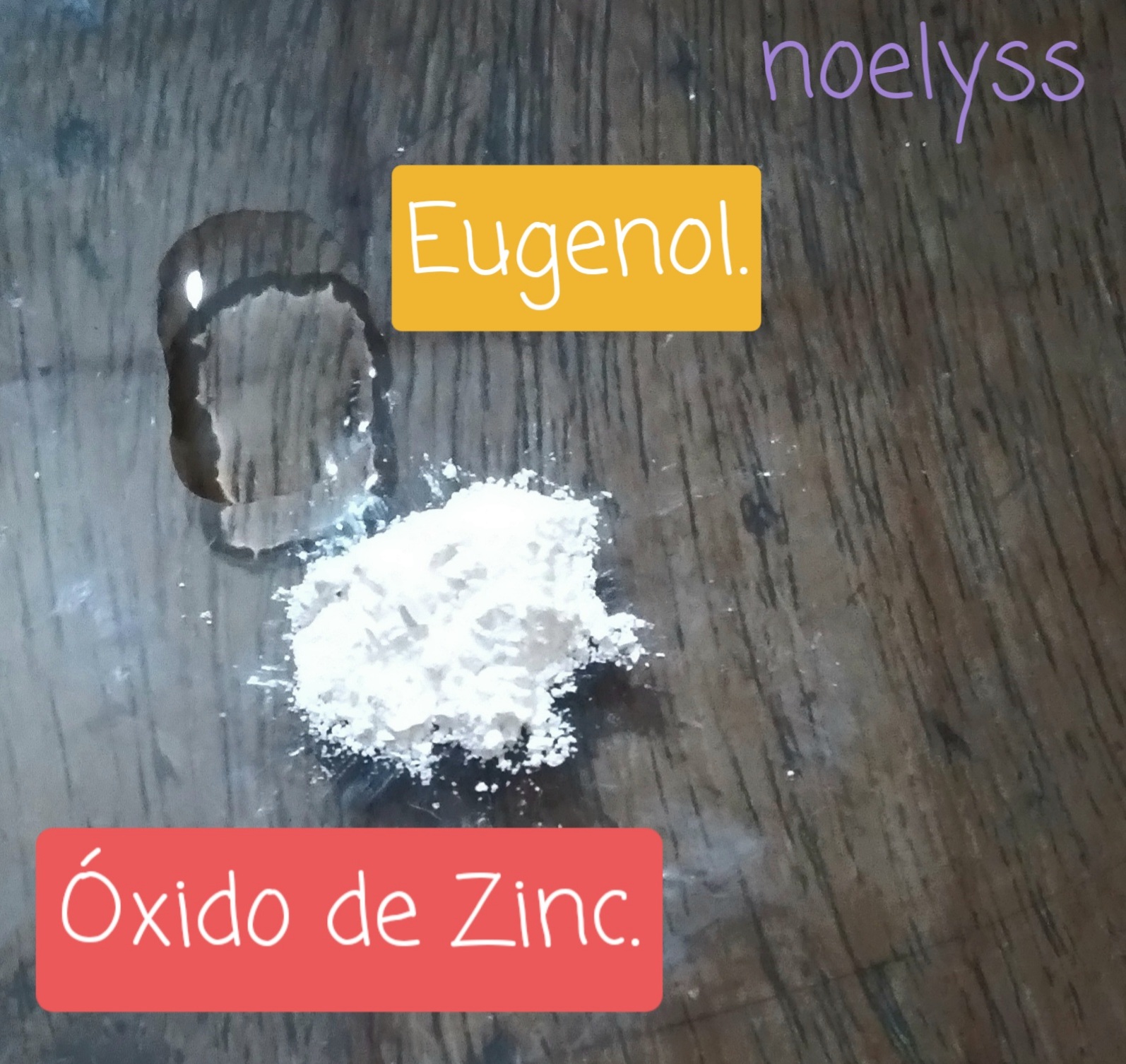
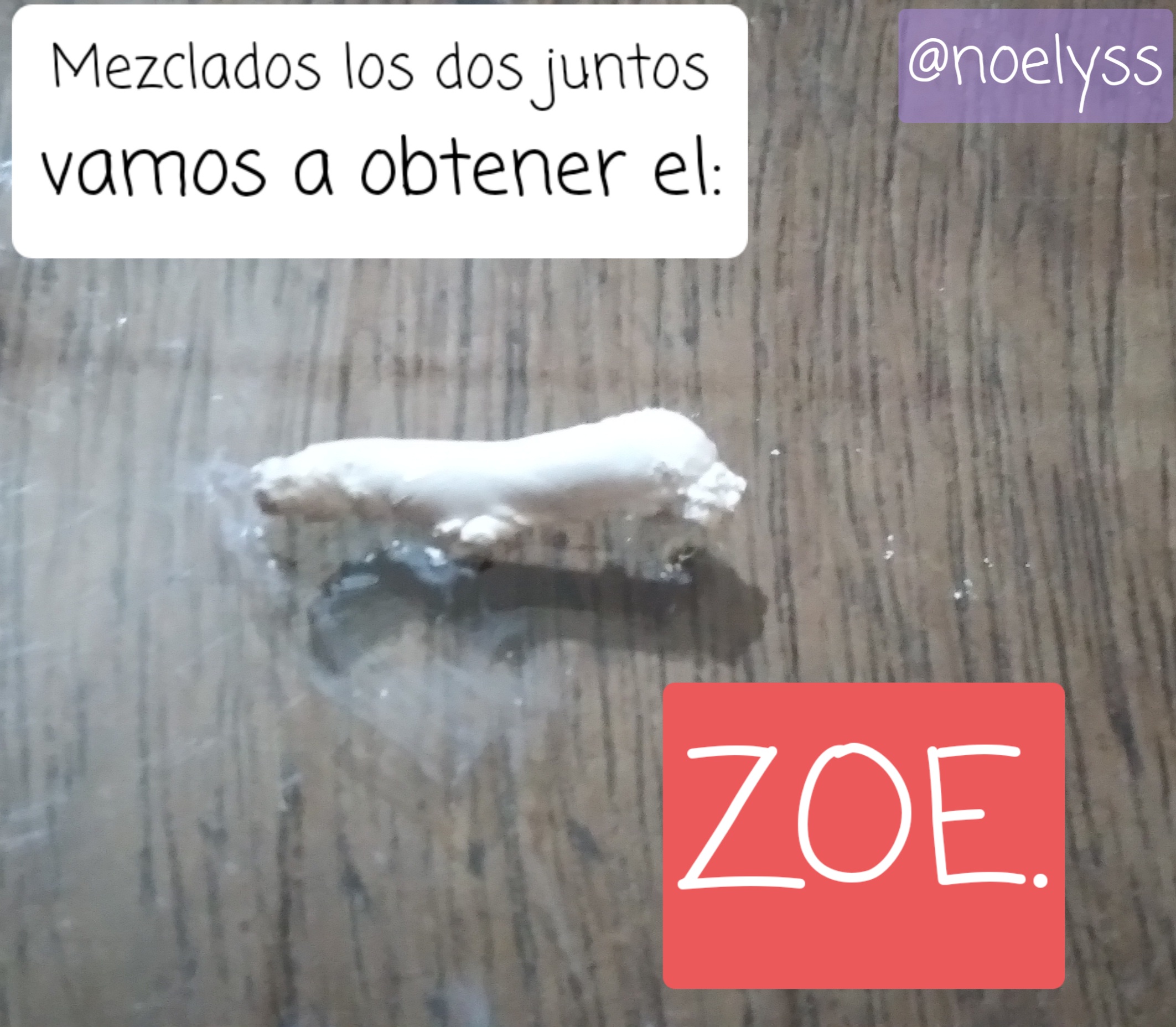
Por último es muy importante tener en cuenta, que el hidróxido de calcio, Zoe, policarboxilato, vidrio ionomerico autocurado son materiales provisionales es decir temporales, mientras que la resina, adhesivo y vidrio fotocurado es permanente.
Finally, it is very important to note that calcium hydroxide, Zoe, polycarboxylate, self-curing ionomer glass are temporary materials, while resin, adhesive and light-curing glass are permanent.
Referencia Informativa/Reference Informative:
http://www.ucv.ve/fileadmin/user_upload/facultad_odontologia/Imagenes/Portal/Odont_Operatoria/Protectores_Dentino_Pulpares..pdf
Los invito a formar parte de grandes comunidades como gems foodiesbeehive, stemsocial, cervantes donde podrán encontrar contenido variado desde recetas, historias, manualidades hasta increíbles post de ciencia y tecnología. Todo un universo de cultura y cripto lo encuentras aquí en Hive
 créditos @doze
créditos @doze


Texto traducido en Deelp
Thanks for your contribution to the STEMsocial community. Feel free to join us on discord to get to know the rest of us!
Please consider delegating to the @stemsocial account (85% of the curation rewards are returned).
You may also include @stemsocial as a beneficiary of the rewards of this post to get a stronger support.